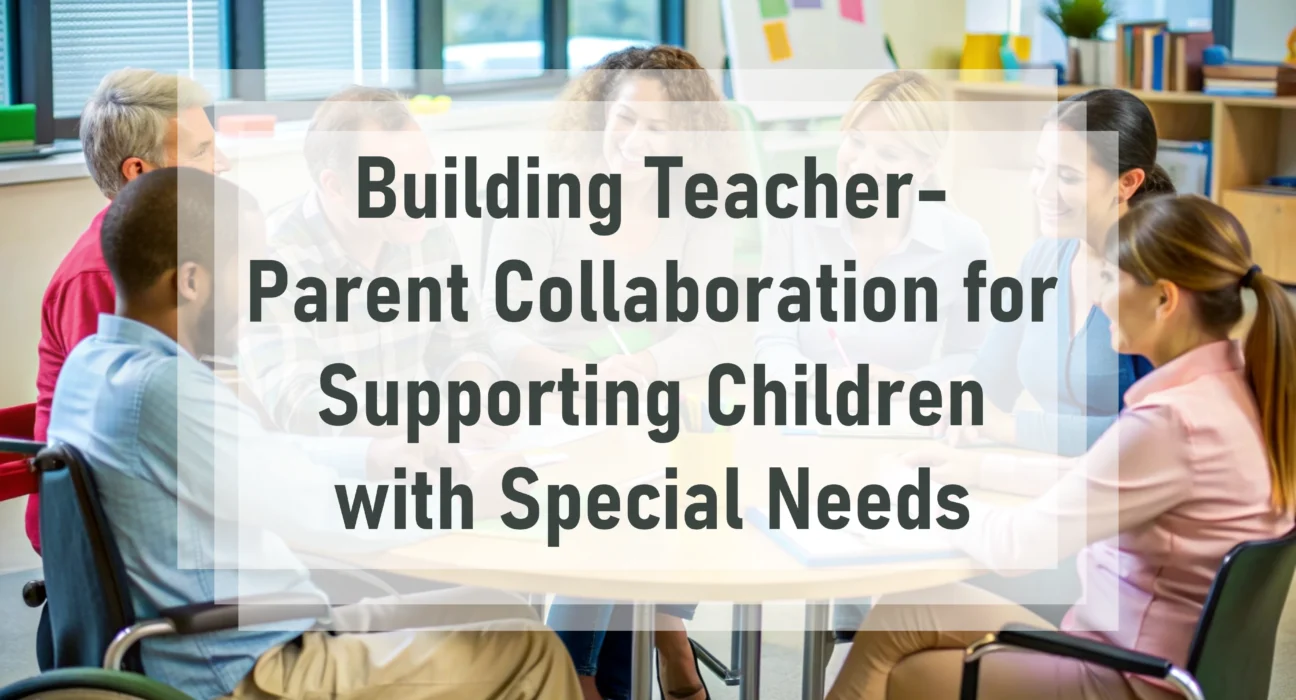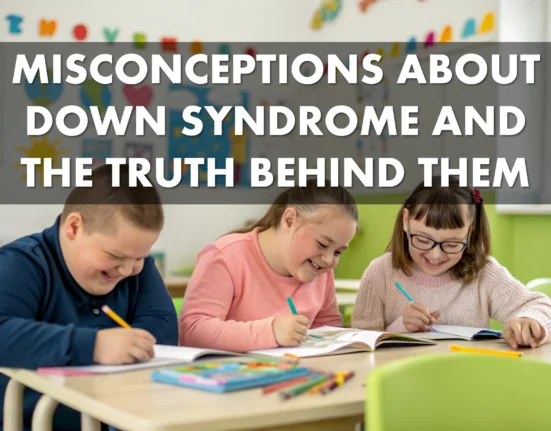Effective teacher-parent collaboration is a cornerstone in supporting the development of children with special needs. When teachers and parents communicate and work together, they can better address the unique challenges each child faces, creating a unified support network that enhances academic progress and emotional well-being. This article explores the strategies and benefits of fostering this crucial partnership, allowing children with special needs to feel seen, supported, and capable of achieving their full potential.
Understanding the Role of Collaboration
Collaboration between teachers and parents of children with special needs creates an environment where both parties contribute essential insights. Parents understand their child’s home environment, emotional triggers, and comfort zones, while teachers bring expertise in educational strategies and developmental support. Together, they form a cohesive team that can adapt and respond to a child’s evolving needs, promoting a smoother educational journey.
Key Benefits of Teacher-Parent Collaboration
For children with special needs, teacher-parent collaboration can lead to emotional security, consistency in educational approaches, and heightened progress. This partnership encourages the use of compatible strategies at home and in school, reducing confusion and enabling the child to feel supported across both environments. Furthermore, when parents and teachers celebrate the child’s milestones and small victories together, it reinforces the child’s self-esteem, fueling motivation and resilience.
Common Challenges in Building Collaboration
Despite its benefits, teacher-parent collaboration can encounter significant obstacles. Common challenges include time constraints, miscommunication, and occasional differences in educational philosophy or approach. Teachers and parents might struggle to find time for regular check-ins, which can lead to inconsistent support for the child. To overcome these challenges, both parties must commit to open-mindedness, patience, and willingness to bridge gaps.
Overcoming Miscommunication and Assumptions
Miscommunication can hinder collaboration, especially when both parties make assumptions about each other’s goals or intentions. Avoiding assumptions and establishing clear communication guidelines from the beginning are essential for a smooth partnership. Regular, straightforward discussions where both sides actively listen to one another’s perspectives can prevent misunderstandings, allowing the child’s needs to remain the primary focus.
Establishing Trust: A Foundation for Success
Trust is the foundation of any effective partnership, and building it between parents and teachers of children with special needs is particularly vital. Teachers demonstrate trustworthiness by transparently sharing updates and assessment results, while parents build trust by openly communicating their child’s unique challenges and strengths. This mutual understanding fosters an environment where both sides feel valued and empowered to support the child’s best interests.
Setting Clear, Mutual Goals for the Child
Setting mutually agreed-upon goals for the child’s development is critical. These goals should be specific, measurable, and reflective of the child’s unique abilities and needs. By identifying and documenting shared objectives, parents and teachers ensure that they are working toward consistent, complementary outcomes, whether focused on academic, social, or emotional growth.
Effective Communication Strategies
Open communication is essential in teacher-parent partnerships. Establishing regular touchpoints, such as weekly or monthly check-ins, can provide structured opportunities for updates and feedback. Communication logs, either in physical or digital form, are also helpful for tracking progress and ensuring both parties stay informed of any changes. By setting clear expectations for communication, parents and teachers can avoid unnecessary confusion and misunderstandings.
Utilizing Technology for Better Connection
Modern technology offers tools that can enhance communication between teachers and parents, making it easier to share information and updates. Video conferencing platforms, messaging apps, and shared online calendars facilitate real-time communication and allow for flexibility when in-person meetings are not feasible. By incorporating technology, teachers and parents can maintain frequent contact, resulting in a stronger and more accessible support network.
Creating Personalized Learning Plans Together
Developing a personalized learning plan in collaboration with parents provides tailored support for children with special needs. Parents can contribute insights into strategies that work at home, helping teachers craft a plan that resonates with the child’s experiences in both settings. When parents feel involved in the educational planning process, they are more likely to stay engaged and actively support the plan’s objectives, increasing its chances of success.
Supporting Behavioral and Emotional Needs
Behavioral and emotional challenges are common for children with special needs, and a collaborative approach to addressing these needs is essential. Teachers and parents can work together to establish consistent behavior management strategies, such as positive reinforcement techniques or structured routines. By maintaining continuity between home and school, children can feel more secure, which can reduce behavioral issues and improve emotional resilience.
Strategies for Inclusive Classroom Integration
Ensuring a child with special needs feels included in the classroom environment is critical to their social development. Teachers and parents can collaborate on strategies that promote inclusion, such as peer mentorship programs or group activities that build empathy and acceptance among classmates. An inclusive classroom fosters a sense of belonging for the child, which positively impacts their self-esteem and willingness to engage with peers.
Regular Feedback and Progress Tracking
Consistent feedback and progress tracking are essential in maintaining an effective teacher-parent collaboration. Establishing a system for recording and sharing observations, achievements, and challenges enables both parties to stay informed and make timely adjustments. Progress tracking ensures that both parents and teachers have access to real-time information about the child’s development, helping to identify and address areas that may require additional support.
The Importance of Consistent Engagement
Consistency in engagement ensures that both parties remain committed to the child’s progress. By establishing a routine for communication and involvement, teachers and parents create a reliable support network that consistently addresses the child’s evolving needs. Regular engagement keeps both parties aligned, making it easier to respond quickly to challenges and celebrate achievements together.
Introducing the IEP Planner for Parents
One effective tool for parents looking to stay organized and maintain clear communication with their child’s support team is the IEP Planner for Parents, available on Amazon. This planner is specifically designed to assist parents in tracking their child’s Individualized Education Program (IEP) goals, appointments, and important updates. By using this planner, parents can centralize essential information, making it easier to communicate with teachers and other specialists about the child’s progress and needs. The IEP Planner for Parents also provides space for notes on observations, areas for improvement, and feedback from teachers, helping parents stay engaged and proactive in their child’s education. Learn more about the IEP Planner for Parents on Amazon.
Celebrating Milestones and Small Victories Together
Recognizing and celebrating milestones is crucial for maintaining motivation. When teachers and parents acknowledge achievements, both large and small, they not only support the child’s confidence but also reinforce the importance of their collaboration. Celebrations can take the form of verbal praise, small rewards, or notes to the child, all of which help to create a positive atmosphere that encourages continued progress.
Case Studies on Successful Collaborations
Examining real-life examples of successful teacher-parent collaborations can provide valuable insights and inspiration. Case studies highlight practical solutions to common challenges and showcase the positive outcomes of effective teamwork. By learning from the successes of others, teachers and parents can adopt strategies that are proven to enhance support for children with special needs.
Evaluating and Adjusting Collaborative Efforts
Regularly evaluating the effectiveness of teacher-parent collaboration is essential. This assessment can involve formal meetings to review progress or informal check-ins to discuss what is working and what needs improvement. By remaining open to feedback and making necessary adjustments, both parties can continuously refine their approach, ensuring that their collaboration remains productive and beneficial.
Conclusion
Effective teacher-parent collaboration is a powerful way to support the educational and emotional needs of children with special needs. Through trust, open communication, and shared goals, parents and teachers can create a stable, nurturing environment that fosters growth and development. Tools like the IEP Planner for Parents can further enhance this partnership by providing an organized system for tracking goals and progress. By investing in this collaboration, both parties contribute to a brighter, more supportive future for the child, celebrating every success along the way.
Suggested Internal Links:
- “Strategies for Supporting Children with Autism in the Classroom”
- “Creating Individualized Education Plans: A Guide for Parents and Teachers”
Suggested Outbound Links:
- Understood.org: Comprehensive Resources for Children with Special Needs
- National Association of Special Education Teachers (NASET): Professional Support for Educators and Parents






